
Caxias do Sul is a city in Rio Grande do Sul, Southern Brazil, situated in the state's mountainous Serra Gaúcha region. It was established by Italian immigrants on June 20, 1890. Today it is the second largest city in the state of Rio Grande do Sul. In 2020, the population of Caxias do Sul was estimated at 517,451 people, many of whom are of Italian and German descent. The demonym of the citizens of Caxias do Sul is Caxiense.

Luís Alves de Lima e Silva, Duke of Caxias, nicknamed "the Peacemaker" and "the Iron Duke", was an army officer, politician and monarchist of the Empire of Brazil. Like his father and uncles, Caxias pursued a military career. In 1823 he fought as a young officer in the Brazilian War for Independence against Portugal, then spent three years in Brazil's southernmost province, Cisplatina, as the government unsuccessfully resisted that province's secession in the Cisplatine War. Though his own father and uncles renounced Emperor Dom Pedro I during the protests of 1831, Caxias remained loyal. Pedro I abdicated in favor of his young son Dom Pedro II, whom Caxias instructed in swordsmanship and horsemanship and eventually befriended.

The Anglican Episcopal Church of Brazil is the 19th province of the Anglican Communion, covering the country of Brazil. It is composed of nine dioceses and one missionary district, each headed by a bishop, among whom one is elected as the Primate of Brazil. The current Primate is Marinez Rosa dos Santos Bassotto. IEAB is the oldest non-Catholic church in Brazil, originating from the Treaty of Commerce and Navigation signed in 1810 between Portugal and the United Kingdom which allowed the Church of England to establish chapels in the former Portuguese colony. In 1890 American missionaries from the Episcopal Church established themselves in the country aiming to create a national church; unlike the English chapels, they celebrated services in Portuguese and converted Brazilians. The Anglican community of Brazil was a missionary district of the Episcopal Church until 1965, when it gained its ecclesiastical independence and became a separate province of the Anglican Communion. Twenty years later, IEAB began to ordain women. It preaches a social gospel, being known for its commitment to fight against problems that affect vast portions of the Brazilian society, such as social inequality, land concentration, domestic violence, racism, homophobia and xenophobia. Its stance as an Inclusive Church has caused both schisms and the arrival of former Catholics and Evangelicals in search of acceptance.

Piazza Brembana is a comune (municipality) in the Province of Bergamo in the Italian region of Lombardy, located about 70 kilometres (43 mi) northeast of Milan and about 30 kilometres (19 mi) north of Bergamo.

The Archdiocese of Porto Alegre is a Latin-Rite Metropolitan Archbishopric of the Roman Catholic Church in Rio Grande do Sul state, Brazil.
Nova Bassano is a municipality and a city in the state of Rio Grande do Sul, south Brazil.

The Roman Catholic Diocese of Caxias do Sul is a diocese located in the city of Caxias do Sul in the ecclesiastical province of Porto Alegre in Brazil.

The Diocese of Erechim is a Latin Church ecclesiastical territory or diocese of the Catholic Church in Brazil. Its episcopal see is Erechim. The Diocese of Erexim is a suffragan diocese in the ecclesiastical province of the metropolitan Archdiocese of Passo Fundo.

Giovanni Schiavo was an Italian Roman Catholic priest and a professed member from the Congregation of Saint Joseph – otherwise known as the Murialdines. Schiavo entered the Murialdines during World War I in 1917 where Eugenio Reffo allowed him to join and he was later ordained to the priesthood in Vicenza in 1927 a decade later. His superiors allowed him to join the missions – to spread the charism of the Murialdines – in Brazil where he served from 1931 until his death several decades after.
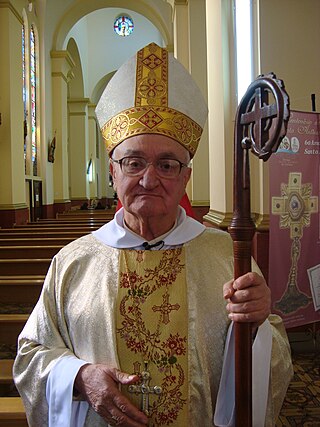
Clóvis Frainer OFMCap was a Roman Catholic archbishop.
Hermínio Pinzetta - in religious Salvador from Casca - was a Brazilian Roman Catholic and a professed religious from the Order of Friars Minor Capuchin. He worked for three decades on his parents' farm where he helped them in the fields and aided in managing the livestock though in later life entered the religious life after a long period of discernment. He took up various tasks while in the convent at Flores da Cunha and worked there in roles such as a porter and beekeeper. Pinzetta was known among his colleagues and the people as a man who exhibited strong virtue with meekness and led to the Bishop of Caxias do Sul in 1970 granting him permission to give Communion to people and in 1971 asking him to promote pastoral initiatives for the sick.

Paulo Cezar Costa is a Brazilian prelate of the Catholic Church who has been Metropolitan Archbishop of Brasilia since December 2020. He has been a bishop since 2010 and served as Bishop of São Carlos from 2016 to 2020.

Leomar Antônio Brustolin is a Brazilian prelate of the Catholic Church who has been archbishop of Santa Maria since 2021. He was auxiliary bishop of Porto Alegre from 2015 to 2021.
Osório Claudio Bebber, OFMCap, was a Brazilian Capuchin. He served as the second Bishop of the Diocese of Tubarão from 1981 to 1992, the Territorial Prelate of the Roman Catholic Diocese of Coxim from 1992 to 1999, and the second Bishop of the Roman Catholic Diocese of Joaçaba from 1999 until his retirement in April 2003. He remained Bishop emeritus of Joaçaba until his death in August 2021.
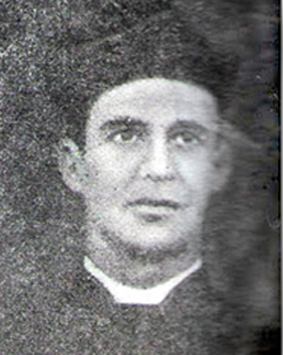
Pietro Antonio Maria Umberto Nosadini was an Italian Catholic priest and journalist.

Nei Paulo Moretto was a Brazilian Roman Catholic prelate. He served as bishop of Cruz Alta (1972–1976), coadjutor bishop (1976–1983) and bishop of Caxias do Sul (1983–2011).
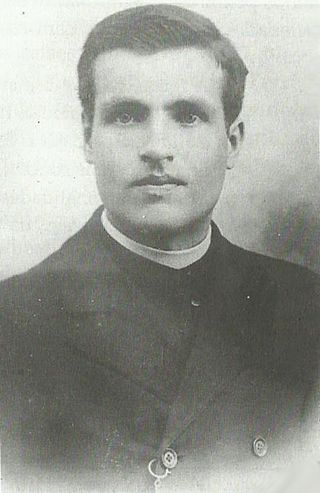
João Meneguzzi was a Brazilian Catholic priest. He was canon and vicar of the Mother Church of Caxias do Sul, and a figure of great projection and influence in the community in the religious, social, cultural, political, and educational fields.
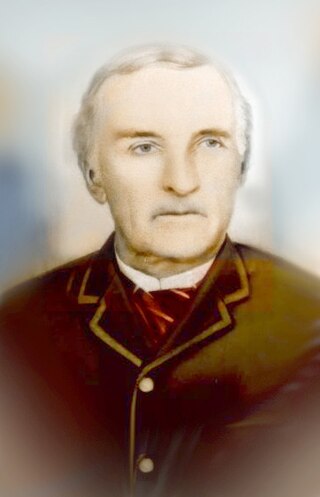
Salvatore Sartori, known in Brazil as Salvador Sartori was an Italian politician and merchant who became a naturalized Brazilian.
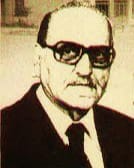
Ernesto Zaffonato or Frei Casimiro Zaffonato was a Brazilian Catholic priest and educator, recognized for his contributions to education and community development in Ipê, Rio Grande do Sul.


















